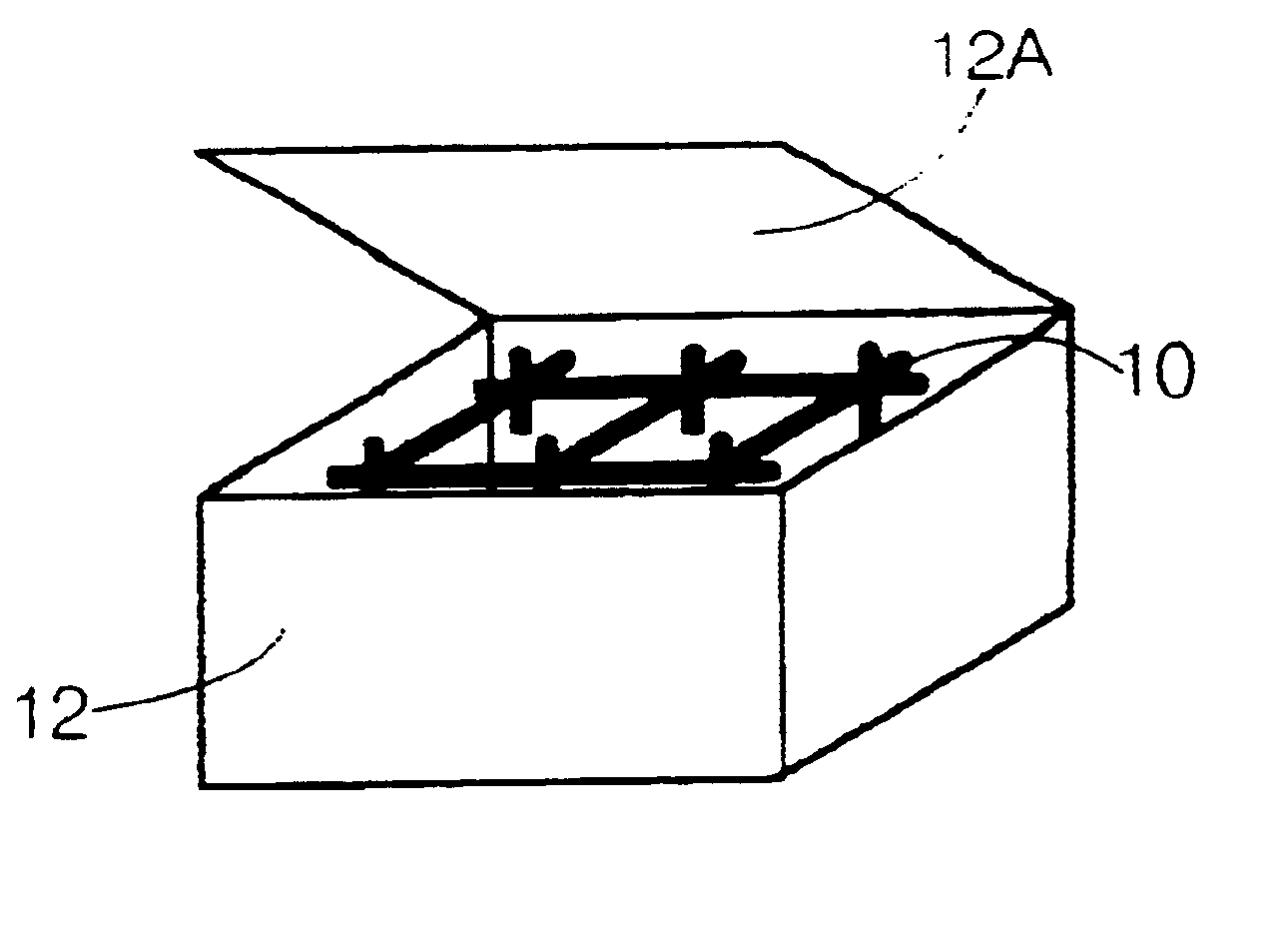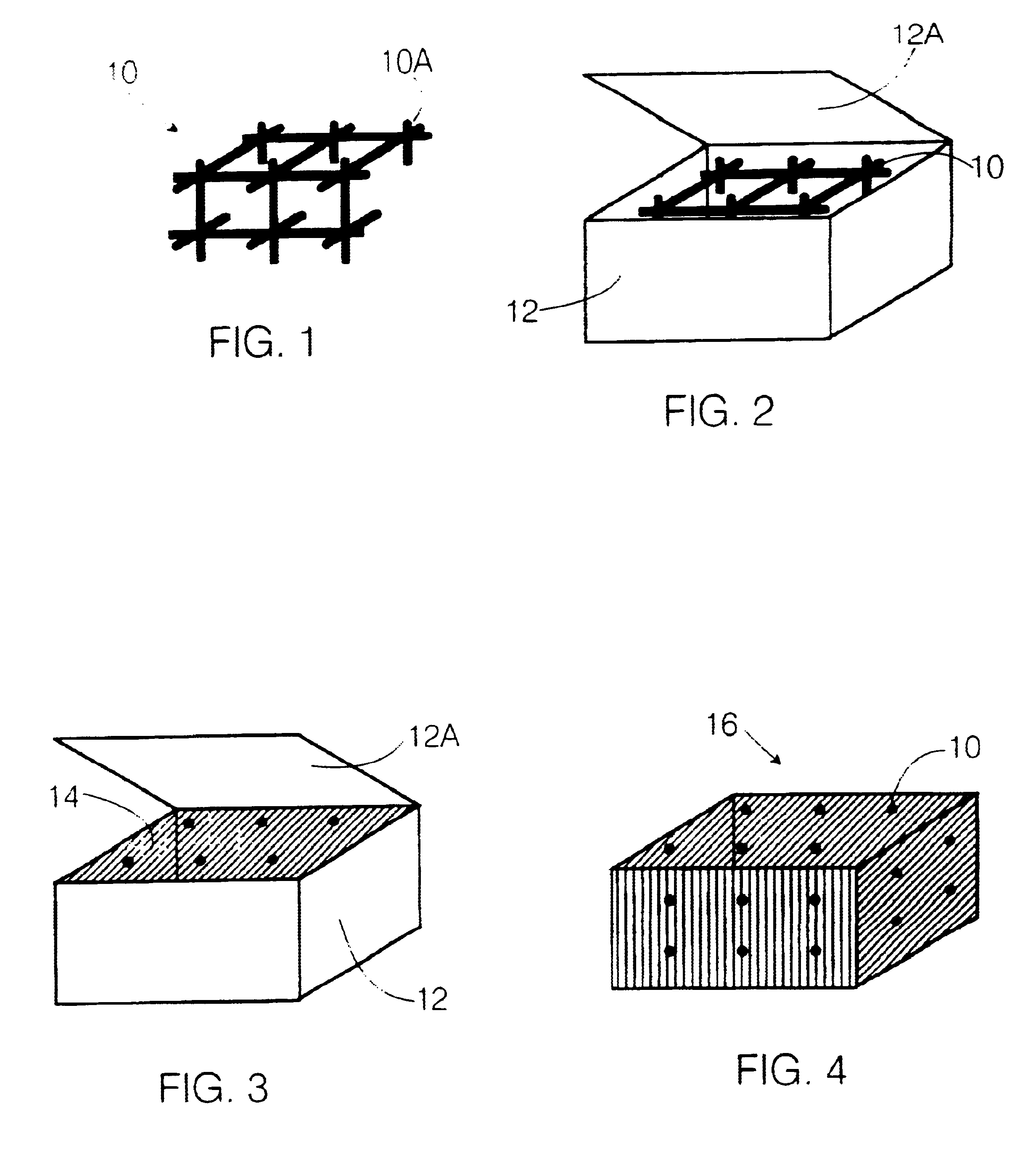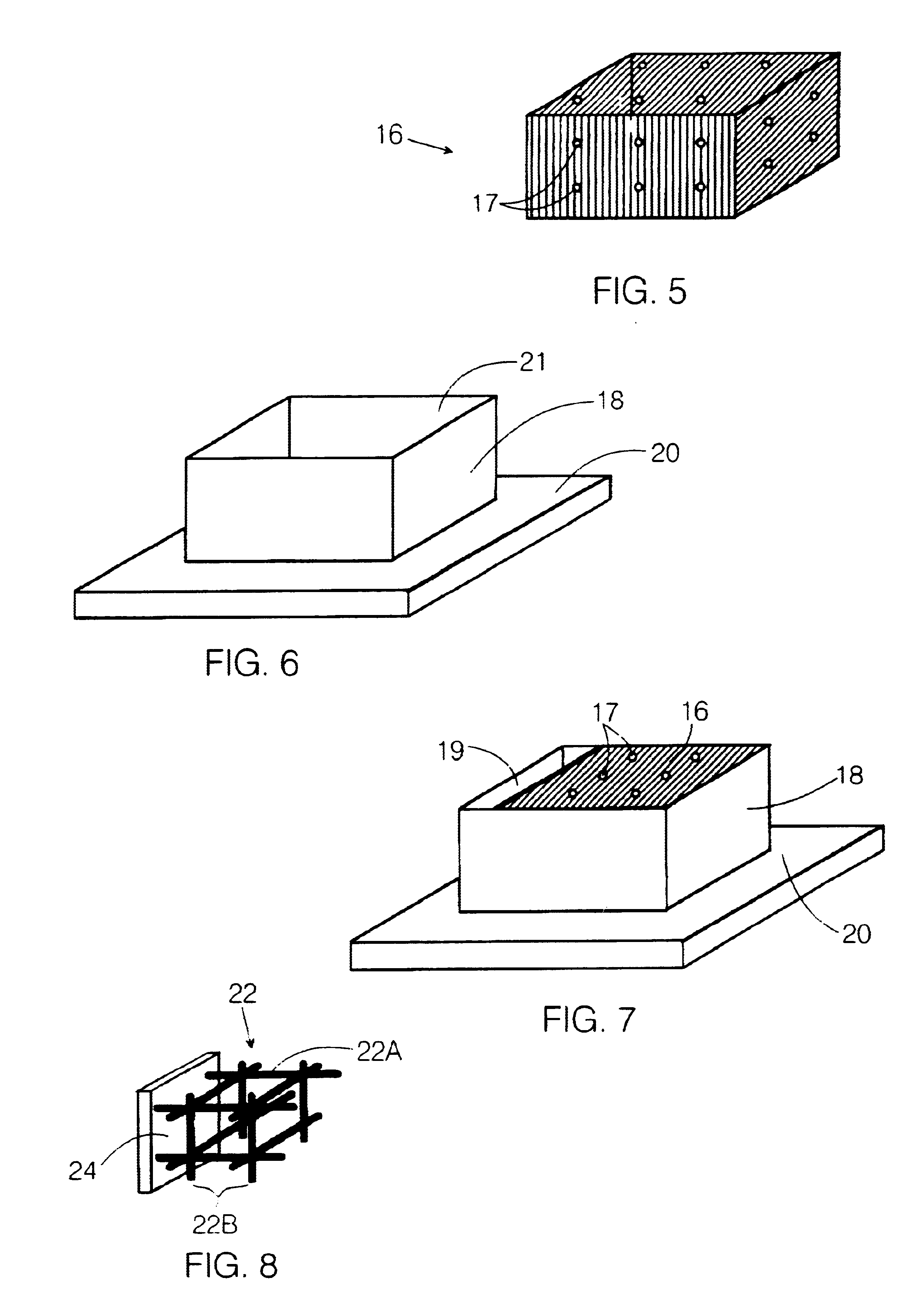Method and device for the production of reticular structures
a technology of reticular structure and refractory mold, which is applied in the direction of foundry moulding apparatus, electrode carrier/collector, filtration separation, etc., can solve the problems of high equipment requirements for melting the substance that is poured into the refractory mold, is difficult to automate the step of bonding a foam pre-structure to a wax plate, and is difficult to achieve. , to achieve the effect of promoting bubble-free solidification of molten metal,
- Summary
- Abstract
- Description
- Claims
- Application Information
AI Technical Summary
Benefits of technology
Problems solved by technology
Method used
Image
Examples
Embodiment Construction
To form a reticular structure 22, shown in FIG. 8, according to the method of the present invention, a reticulated foam pre-structure 10 is placed in an openable container 12 having a container lid 12A, as illustrated by FIGS. 1 and 2. Preferably, the material used for the pre-structure material 10 is polyurethane foam, although any material that provides a sufficient number of pores is suitable for use as the pre-structure material. The foam pre-structure 10 is then infiltrated with a refractory mold material 14, as shown in FIG. 3. The container lid 12A is closed for applying a vacuum to the openable container 12. The refractory mold material 14 is allowed to solidify to form a refractory mold 16. Preferably, the refractory mold material 14 is a watery gypsum plaster suspension.
The surface of the foam pre-structure 10 is modifiable, preferably by roughening or structuring the surface of the foam pre-structure 10 after it has been placed in the openable container 12. Pneumatic or v...
PUM
| Property | Measurement | Unit |
|---|---|---|
| Structure | aaaaa | aaaaa |
| Electrical resistance | aaaaa | aaaaa |
| Metallic bond | aaaaa | aaaaa |
Abstract
Description
Claims
Application Information
 Login to View More
Login to View More - R&D
- Intellectual Property
- Life Sciences
- Materials
- Tech Scout
- Unparalleled Data Quality
- Higher Quality Content
- 60% Fewer Hallucinations
Browse by: Latest US Patents, China's latest patents, Technical Efficacy Thesaurus, Application Domain, Technology Topic, Popular Technical Reports.
© 2025 PatSnap. All rights reserved.Legal|Privacy policy|Modern Slavery Act Transparency Statement|Sitemap|About US| Contact US: help@patsnap.com



